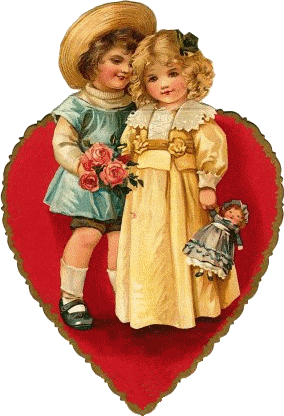  Sending Valentine cards is a custom that dates back to pagan times. The priest, St. Valentine, is said to have sent messages of love to his friends from his prison cell. Following his execution on February 14, 296 A.D., countless other "prisoners of love" have joined in this timeless tradition. It was not until 1537, however, that St. Valentine's Day gained recognition as an official holiday.
 Valentine's Day has been celebrated for many centuries. Even though Valentine's Day falls on February 14, its customs began with the Roman Feast of Lupercalia, which was celebrated on February 15. On the eve of Saint Valentine's Day, young people would gather, and each young man would draw by lot a young lady's name. The couples were then "valentines" for the year and would exchange tokens of love.
 Valentines became mass-produced around 1850, and many of them are still available to collectors. Victorian Valentines, often elaborately adorned with honeycombed tissue paper, embossed paper hearts and exquisite lace, are aesthetically impressive. Some finer examples originally cost up to a month's earnings and proposal Valentines, usually featuring a church or a ring, enjoyed popularity. In keeping with the times, during this era it was considered improper for a lady to send a Valentine to a man.
 Throughout the ages, Valentines have provided fragile remembrances of history, and they are a timeless reminder that the supreme happiness in life is to know that we are loved.



For centuries people have communicated with flowers. They were often
able to say things that the giver of them couldn't. Herbal and floral
meanings can be traced back to early Egyptian, Chinese and Greek
cultures, but John Parkinson, a French gardener and physician, is
credited with giving meaning to flower bouquets in the early 1600's.
The popularity of "flower language" took off from there and in the
Victorian era floral dictionaries could be found in most homes. 
 Copyright 2000 |